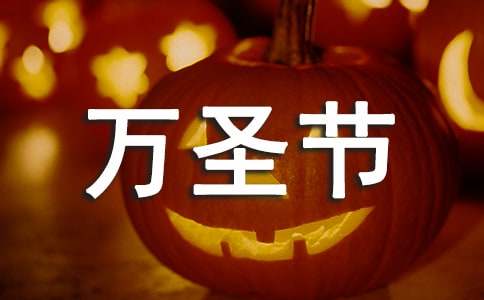- 相關推薦
介紹萬圣節的英文資料
The Celts believed that every year on the last day of October, the souls of the dead visited the earth.www.

When the Romans conquered the Celts in the first century A.D., they added parts of their festivals, Feralia and Pomona to the tradition. Feralia was a festival to honor the dead and Pomona was a harvest festival named after the goddess of fruit (apples) and trees.
Around the eigth century, the Christian church made November 1 All Saints' Day to honor all of the saints that didn't have a special day of their own. Over the years these festivals combined, the mass held on All Saints' Day was called Allhallowmas (the mass of all Hallows - saintly people)。 The night before was known as All Hallows Eve. Eventually this name became Halloween.
In the 1800s, as a lot of people emigrated to the U.S., the holidays and traditions of different cultures merged. Halloween was not always a happy time. October 31, or the night before took on other names. Some called it Devil's or Hell night, to others it was mischief night. Here in Vermont, the night before is called cabbage night. To some people this became a time to play tricks on others. Some of these tricks were not fun at all. Luckily, community groups and individuals took action and started to change Halloween into a family event. Dressing up in costumes and going ”trick or treating“, costume parades, community parties and Fall festivals are some of the ways that Halloween is celebrated today.
Other countries have different Fall festivals to honor the deceased.
The Festival of the Dead is one of the most important happenings in both Palermo and the rest of Sicily. The second of November is a festival day for the children of Palermo as, according to tradition,they were made to believe that their dead relatives would return the night before and leave them traditional sweets and cakes on the table (Martorana fruit, which is almond paste made into the shape of different fruit)。 They would also receive puppets of boiled sugar and toys. It's one way of keeping the memory of their dead relatives and loved ones alive.
一年中最”鬧鬼“的這天夜里,各種妖魔鬼怪、 海盜、 外星來客和巫婆們紛紛出動。在基督紀元以前,凱爾特人在夏未舉行儀式感激上蒼和太陽的恩惠。
當時的占卜者點燃并施巫術以驅趕據說在四周游蕩的妖魔怪。后來,羅馬人用果仁和蘋果來慶祝的豐收節與凱爾特人的10月31日溶合了。
在中世紀,人們穿上動物造型的服飾、 戴上可怕的面具是想在萬圣節前夜驅趕黑夜中的鬼怪。盡管後來基督教代替了凱爾特和羅馬的宗教活動,早期的習俗還是保留下來了。現在,孩子們帶著開玩笑的心理穿戴上各種服飾和面具參加萬圣節舞會,這些舞會四周的墻上往往懸掛著用紙糊的巫婆、 黑貓、 鬼怪和尸骨,窗前和門口則吊著齜牙裂嘴或是面目可憎的南瓜燈籠。孩子們還常常試圖咬住懸掛著的蘋果。
【介紹萬圣節的英文資料】相關文章:
面試用英文介紹自己 -資料08-17
萬圣節的資料04-27
萬圣節來歷中英文介紹優秀06-01
大寒資料介紹 -資料09-02
愛情的英文經典句子 -資料08-17
英文日期寫法 -資料09-16
英文愛情經典語句分享 -資料10-24
浪漫的英文情書 -資料10-13
傷感愛情的英文語句 -資料07-17
愛情的英文句子 -資料08-25